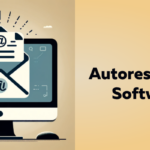Are you a business owner looking to expand your reach and boost your sales? Look no further than e-commerce website services. In today’s digital era, having a strong online presence is crucial for the success of any business. E-commerce websites have revolutionized the way we shop, making it easier and more convenient than ever before. But creating and managing an e-commerce website can be a daunting task, especially if you’re not tech-savvy. That’s where e-commerce website services come in. These services provide everything you need to build and maintain a professional and user-friendly online store, from website design and development to payment processing and inventory management. In this article, we will explore how e-commerce website services can transform your business from start to finish, helping you reach a wider audience and increase your sales. Get ready to take your business to new heights with the power of e-commerce!
The importance of having a professional e-commerce website
In today’s highly competitive business landscape, having a professional e-commerce website is no longer a luxury – it’s a necessity. A well-designed and user-friendly e-commerce website can significantly impact your business’s success by attracting more customers, increasing conversions, and boosting sales.
One of the key advantages of having a professional e-commerce website is the ability to reach a wider audience. With an online store, your products or services are accessible to anyone with an internet connection, not just those in your local area. This opens up a world of opportunities and allows you to tap into new markets and customer segments.
Furthermore, a professional e-commerce website instils trust and credibility in your brand. Potential customers are more likely to make a purchase from a website that looks professional and trustworthy. On the other hand, a poorly designed or outdated website can drive customers away and harm your reputation.
Having a professional e-commerce website also enables you to provide a seamless and convenient shopping experience for your customers. With features like product catalogues, search functionality, shopping carts, and secure payment gateways, you can make the buying process easy and efficient. This not only improves customer satisfaction but also encourages repeat purchases and fosters customer loyalty.
Key features and functionalities of e-commerce websites
A successful e-commerce website is built on a foundation of key features and functionalities that enhance the user experience and drive conversions. These features are designed to make the shopping process seamless, secure, and enjoyable for both the customer and the business owner.
One of the key features of an e-commerce website is a user-friendly interface. A well-designed interface ensures that visitors can easily navigate through your website, find the products they’re looking for, and make a purchase with minimal effort. This includes intuitive menus, clear product categorization, and a streamlined checkout process.
Another important feature is a robust product catalogue. Your e-commerce website should allow you to showcase your products in a visually appealing and organized manner. This includes high-quality product images, detailed descriptions, pricing information, and customer reviews. A well-structured product catalogue helps customers make informed purchasing decisions and increases the chances of a sale.
Payment processing is another critical functionality of an e-commerce website. Your website should support multiple payment options, including credit cards, digital wallets, and alternative payment methods. Security is of utmost importance when it comes to handling customer payments. Therefore, your e-commerce website should be equipped with SSL encryption and comply with the latest security standards to ensure that customer data is protected.
Additionally, features such as inventory management, order tracking, and customer support are essential for a smooth e-commerce experience. These functionalities allow you to keep track of your stock levels, process orders efficiently, and provide timely assistance to your customers.
How e-commerce website services can benefit your business
Now that we’ve discussed the importance of having a professional e-commerce website and the key features it should have, let’s explore how e-commerce website services can benefit your business. These services offer a comprehensive solution for building, managing, and growing your online store, saving you time, effort, and resources.
One of the main advantages of using e-commerce website services is that they provide expertise and technical knowledge that you may not have in-house. Building and managing an e-commerce website requires specialized skills in areas such as web design, programming, and digital marketing. By leveraging the expertise of e-commerce website service providers, you can ensure that your website is built to industry standards and optimized for maximum performance.
E-commerce website services also offer a range of customizable templates and themes that allow you to create a unique and visually appealing website that aligns with your brand. These templates are designed to be user-friendly and responsive, ensuring that your website looks great on any device.
Furthermore, e-commerce website services handle all the technical aspects of website management, including hosting, security, and software updates. This means that you can focus on running your business while leaving the technicalities to the experts.
Additionally, e-commerce website services often provide integrated marketing tools and analytics that help you optimize your website for search engines, track your sales and conversion rates, and make data-driven decisions. These insights are invaluable for understanding your customer’s behavior, identifying areas for improvement, and implementing effective marketing strategies.
Choosing the right e-commerce platform for your business
When it comes to choosing the right e-commerce platform for your business, there are several factors to consider. The platform you choose will determine the functionality, scalability, and customization options available to you.
One of the first considerations is whether to opt for a hosted or self-hosted e-commerce platform. Hosted platforms, such as Shopify and BigCommerce, provide a complete solution that includes hosting, security, and technical support. They are ideal for small to medium-sized businesses that want a hassle-free solution. On the other hand, self-hosted platforms, such as WooCommerce and Magento, offer more flexibility and customization options but require technical expertise to set up and manage.
Another important factor to consider is the scalability of the platform. As your business grows, you’ll need a platform that can handle increased traffic, product listings, and sales volumes. Look for a platform that offers scalability options, such as the ability to add more server resources or integrate with third-party tools for advanced functionality.
Customization options are also crucial for creating a unique and branded e-commerce website. Look for platforms that offer a wide range of themes, templates, and plugins that allow you to customize the design, layout, and functionality of your website.
Ease of use is another factor to consider, especially if you don’t have technical expertise. Look for platforms that provide a user-friendly interface, drag-and-drop functionality, and intuitive tools for managing your website. Additionally, consider the availability of technical support and documentation in case you encounter any issues or need assistance.
Lastly, consider the pricing structure of the platform. Different platforms have different pricing models, including monthly subscriptions, transaction fees, and additional costs for advanced features. Evaluate your budget and choose a platform that offers a pricing structure that aligns with your business goals and financial resources.
Understanding the process of building an e-commerce website
Building an e-commerce website involves several steps, from planning and design to development and launch. Understanding the process can help you set realistic expectations and ensure a smooth implementation.
The first step in building an e-commerce website is planning. This involves defining your business goals, target audience, product offerings, and overall website strategy. Consider factors such as pricing, shipping options, and return policies. Additionally, conduct market research to identify your competitors and understand the current trends in your industry.
Next, you’ll need to design the layout and visual elements of your website. This includes creating a wireframe or mockup that outlines the structure and functionality of each page. Consider the user experience and ensure that your website is intuitive and easy to navigate.
Once the design is finalized, the development phase begins. This involves coding the website using HTML, CSS, and other programming languages. If you’re using an e-commerce platform, this step may involve customizing templates and adding functionality through plugins or extensions.
After the development phase, it’s time to populate your website with products and content. This includes writing compelling product descriptions, optimizing product images, and organizing your catalog in a logical manner. Additionally, consider adding informative and engaging content such as blog posts, videos, or customer testimonials to enhance the overall user experience.
Before launching your website, it’s essential to thoroughly test its functionality and performance. This involves checking for any broken links, testing the checkout process, and ensuring that your website is responsive on different devices and browsers.
Once your website is ready, it’s time to launch it to the public. This involves setting up a domain name, configuring hosting, and optimizing your website for search engines. Additionally, consider implementing marketing strategies such as social media campaigns, email marketing, or search engine optimization to drive traffic to your website.
Customization options and branding considerations
When building an e-commerce website, customization options play a crucial role in creating a unique and branded online store. Customization allows you to differentiate yourself from your competitors and create a memorable shopping experience for your customers.
One of the main customization options is the design and layout of your website. This includes choosing a color scheme, typography, and visual elements that align with your brand identity. Consider your target audience and the emotions you want to evoke with your website design.
Furthermore, consider customizing the user interface and user experience to make your website more intuitive and user-friendly. This includes streamlining the checkout process, adding product recommendations, and providing easy access to customer support.
Product customization is another option to consider, especially if you offer customizable or personalized products. Allow customers to choose different options such as color, size, or engraving, and provide a visual representation of their choices. This not only enhances the shopping experience but also increases customer satisfaction and engagement.
Additionally, consider adding branding elements throughout your website, such as logos, taglines, or brand stories. These elements reinforce your brand identity and help customers connect with your brand on a deeper level.
Integrating payment gateways and ensuring secure transactions
One of the critical aspects of an e-commerce website is the integration of payment gateways and ensuring secure transactions. Customers need to feel confident that their payment information is protected and that their transactions are processed smoothly.
Payment gateways are third-party services that facilitate the transfer of funds between customers and merchants. They encrypt sensitive payment information, such as credit card details, and securely transmit it to the appropriate financial institution for processing.
When choosing a payment gateway, consider factors such as security, ease of integration, and transaction fees. Look for gateways that comply with industry standards, such as PCI DSS (Payment Card Industry Data Security Standard), and offer features like fraud detection and chargeback protection.
Additionally, ensure that your payment gateway supports the payment methods commonly used by your target audience. This includes credit cards, digital wallets, and alternative payment methods such as PayPal or Apple Pay. Offering multiple payment options can increase customer convenience and reduce cart abandonment rates.
To further enhance security, consider implementing SSL (Secure Sockets Layer) encryption on your website. SSL encrypts the data transmitted between your website and the customer’s browser, making it virtually impossible for hackers to intercept and decipher. SSL certificates are issued by trusted certificate authorities and can be easily installed on your website.
Regularly monitor and update your e-commerce website’s security measures to stay ahead of potential threats. This includes installing security patches, regularly scanning for vulnerabilities, and educating your employees about security best practices.
Optimizing your e-commerce website for search engines
Search engine optimization (SEO) is crucial for driving organic traffic to your e-commerce website and increasing your visibility in search engine results. By optimizing your website for relevant keywords and improving its overall structure, you can attract more qualified leads and increase your chances of making a sale.
One of the first steps in optimizing your e-commerce website for search engines is conducting keyword research. Identify the keywords and phrases that your target audience is using to search for products or services similar to yours. Consider factors such as search volume, competition, and relevance to your business.
Next, optimize your website’s on-page elements, including meta titles, meta descriptions, and header tags. Incorporate your target keywords naturally within these elements to signal to search engines what your website is about. Additionally, optimize your product descriptions and category pages by incorporating relevant keywords and providing unique and informative content.
Another important aspect of SEO is building high-quality backlinks to your website. Backlinks are links from other websites that point to your website. They signal to search engines that your website is trustworthy and authoritative. Focus on acquiring backlinks from reputable and relevant websites within your industry. This can be achieved through content marketing, guest blogging, or influencer partnerships.
Additionally, ensure that your website is mobile-friendly and optimized for mobile search. With the increasing use of mobile devices for online shopping, search engines prioritize mobile-friendly websites in their search results. This means that your website should load quickly, have a responsive design, and provide a seamless user experience on mobile devices.
Regularly monitor your website’s performance using analytics tools to identify areas for improvement and track the effectiveness of your SEO efforts. Update your content regularly, monitor your rankings, and make data-driven decisions to stay ahead of your competitors.
Enhancing user experience and conversion rates
User experience (UX) plays a significant role in the success of your e-commerce website. A positive and engaging user experience can increase customer satisfaction, encourage repeat purchases, and improve conversion rates.
One of the key aspects of a good user experience is website speed. Slow loading times can frustrate users and drive them away from your website. Optimize your website’s performance by compressing images, minifying CSS and JavaScript files, and leveraging caching techniques. Additionally, choose a reliable hosting provider that can handle your website’s traffic and ensure minimal downtime.
Another aspect of user experience is intuitive navigation. Ensure that your website’s menus and search functionality are easy to use and provide accurate results. Use clear and descriptive labels for your categories and products to help users find what they’re looking for quickly. Additionally, consider implementing features such as filters, sorting options, and related product recommendations to enhance the browsing experience.
Product pages are a critical part of the user experience. Provide high-quality product images from different angles and in different contexts to give users a clear understanding of what they’re purchasing. Include detailed product descriptions that highlight the key features and benefits. Additionally, display customer reviews and ratings to build trust and provide social proof.
















